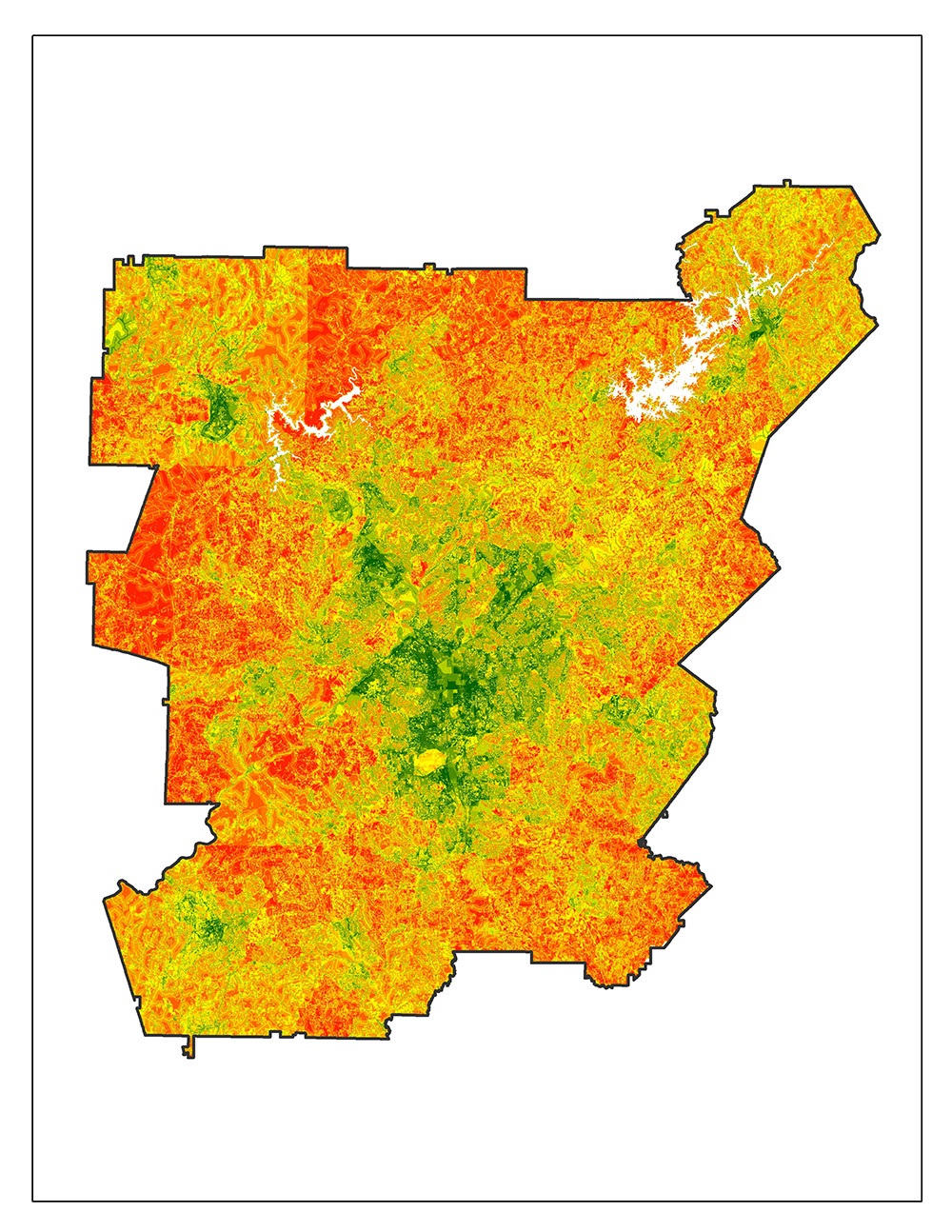The Greater Atlanta metro area is home to more than half of Georgia’s population. It is a bustling American metropolis of concrete and steel that also boasts extensive parks, gardens and urban forests. As with other growing metro areas, the city is continually seeking ways to balance its green canopy with vital infrastructure – especially as the population is projected to double by 2060.
Fortunately for Atlanta, the Georgia chapter of The Nature Conservancy (TNC) formulated a plan for one of the growing city’s potential challenges – its water supply – and turned to NASA DEVELOP for help. Using data from NASA satellites, the DEVELOP and TNC teams identified areas for reforestation and determined where stormwater runoff affects water quality. Then they used the information to build a map that prioritized these efforts along Atlanta’s major watersheds. “The Nature Conservancy developed an urban conservation program focused on reducing stormwater [runoff] impacts in the Atlanta metro area,” explained Sara Gottlieb, the Director of Freshwater Science & Strategy at TNC.
Stormwater runoff is caused by rainfall or snowmelt running off roadways, parking lots and other impervious surfaces, and draining into local waterways. It is a leading cause of urban water pollution as oil, pesticides, and other chemicals get washed into a city’s streams, rivers and lakes.
TNC’s plan for Atlanta is part of its overall North American Cities conservation program to demonstrate the role that the environment plays in addressing the key challenges facing nature and people in 20 American cities. One way it’s doing this is by promoting urban greenspace as an alternative to traditional stormwater management like costly culverts and drains. This “green” infrastructure helps decrease urban runoff and reduces the pollutants entering local waterways.
It’s an ambitious plan, especially for a metropolitan area like “The Big Peach.” The greater Atlanta region is huge – about the size of Connecticut – and has one of the most extensive urban tree canopies in the United States. So the question was: Where should TNC and its partners concentrate their conservation efforts?
DEVELOP Lead Christopher Cameron said the project identified specific areas where TNC could focus its conservation efforts. “Reforestation and green space development opportunities exist along several waterways adjacent to Atlanta,” he noted.
The project also identified communities where major sources of runoff could be minimized by additional green infrastructure. Cameron added, “The majority of open or managed land with the highest potential to affect water quality occurs north of Atlanta. The downstream effects of any land management practices at these locations could be significant.”
“We could not have completed these analyses without access to NASA’s resources and Earth observations.”
–Sara Gottlieb, The Nature Conservancy
When the project wrapped, TNC received that crucial, fine-detailed information it was lacking. Myriam Dormer, an urban conservation associate at TNC, remarked, “Now we have a smaller subset of places within Atlanta where we can target reforestation projects and then target engagement strategies.”
Gottlieb agreed, saying, “The results of these analyses will be used immediately to inform decisions about land protection and reforestation to benefit communities by protecting drinking water supplies, providing opportunities for outdoor recreation, and serving as educational settings to demonstrate the importance of maintaining greenspace in urban areas.”
Keeping Atlanta peachy-keen takes a team effort. As Gottlieb stressed, “We could not have completed these analyses without access to NASA’s resources and Earth observations.”
This story is part of our Space for U.S. collection. To learn how NASA data are being used in your state, please visit nasa.gov/spaceforus.




